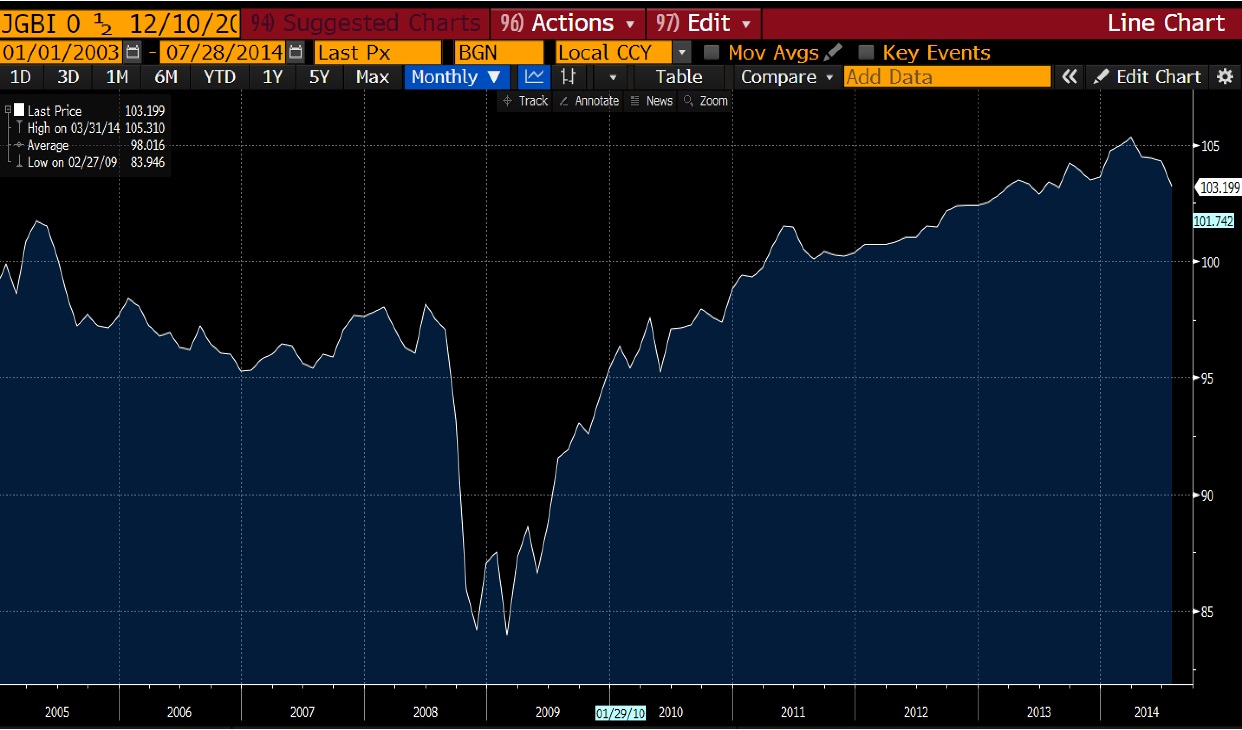Home>Finance>What Is Mergers And Acquisitions Risk Arbitrage


Finance
What Is Mergers And Acquisitions Risk Arbitrage
Published: February 24, 2024
Learn about the finance concept of mergers and acquisitions risk arbitrage and its impact on investment strategies. Understand the risks and potential rewards in this area.
(Many of the links in this article redirect to a specific reviewed product. Your purchase of these products through affiliate links helps to generate commission for LiveWell, at no extra cost. Learn more)
Table of Contents
**
Introduction
**
Mergers and acquisitions (M&A) are pivotal events in the corporate world, often shaping the landscape of industries and markets. The process of M&A involves the consolidation of companies or assets, typically through various financial transactions. While M&A activities offer opportunities for growth, diversification, and synergy, they also introduce a degree of uncertainty and risk. One particular area of focus within M&A is risk arbitrage, a specialized investment strategy that seeks to capitalize on price differentials arising from M&A transactions. Understanding the nuances of risk arbitrage in the context of M&A is essential for investors, financial professionals, and corporate stakeholders. In this article, we will delve into the intricacies of mergers and acquisitions risk arbitrage, exploring its fundamental concepts, influencing factors, and strategies for effective management.
M&A transactions can take various forms, including mergers, acquisitions, consolidations, and asset purchases. These transactions are driven by diverse motives, such as expanding market share, achieving cost efficiencies, accessing new technologies, or diversifying product portfolios. The dynamics of M&A are influenced by economic conditions, industry trends, regulatory environments, and the strategic objectives of the involved entities. As such, M&A activities can create substantial value for stakeholders, but they also entail inherent complexities and uncertainties.
Risk arbitrage, also known as merger arbitrage, is a specialized investment strategy that involves capitalizing on the price differentials between the current market price of a target company's stock and the anticipated acquisition price. This strategy requires a deep understanding of the M&A landscape, including the specific terms of the deal, regulatory considerations, and the broader market sentiment. By effectively navigating the nuances of risk arbitrage, investors can potentially generate returns that are uncorrelated with broader market movements, making it an appealing strategy for portfolio diversification.
As we explore the realm of mergers and acquisitions risk arbitrage, it becomes evident that this domain is multifaceted and dynamic. From the intricacies of deal structuring to the impact of regulatory approvals, numerous factors influence the risk and potential returns associated with M&A transactions. By delving into the core principles of risk arbitrage and examining the strategies for mitigating associated risks, we can gain valuable insights into this specialized yet impactful facet of the financial landscape.
**
Understanding Mergers and Acquisitions
Mergers and acquisitions (M&A) encompass a spectrum of corporate activities that involve the consolidation of companies or their assets. In a merger, two or more companies combine to form a new entity, with the goal of leveraging synergies, expanding market reach, or achieving operational efficiencies. On the other hand, an acquisition occurs when one company purchases another, thereby gaining control of its operations, resources, and intellectual property. Both mergers and acquisitions are strategic maneuvers aimed at enhancing competitiveness, driving growth, or unlocking value for stakeholders.
M&A transactions can be categorized based on their nature and the degree of integration between the involved entities. Horizontal mergers and acquisitions involve companies operating in the same industry or offering similar products or services. This form of consolidation is often driven by the pursuit of market dominance, cost savings through economies of scale, or the elimination of competitors. Vertical mergers and acquisitions, on the other hand, involve companies within the same supply chain or distribution channel. By integrating upstream or downstream operations, companies seek to streamline processes, secure input supplies, or gain direct access to end customers.
Understanding the motivations behind M&A activities is crucial for comprehending the associated risks and opportunities. Companies may pursue M&A for various reasons, including diversification, market expansion, strategic realignment, or the acquisition of valuable intellectual property. Additionally, M&A transactions can be influenced by macroeconomic factors, industry trends, technological advancements, and regulatory developments. This multifaceted landscape underscores the significance of in-depth analysis and due diligence when evaluating M&A opportunities or participating in risk arbitrage strategies.
Furthermore, the impact of M&A extends beyond the involved companies, affecting employees, customers, suppliers, and the broader market ecosystem. The integration of corporate cultures, operational systems, and human resources is a critical aspect of post-merger activities, as it can significantly influence the success or failure of the combined entity. From a financial perspective, M&A transactions can reshape balance sheets, alter capital structures, and create opportunities for optimizing tax positions and capital allocation.
By gaining a comprehensive understanding of the dynamics and implications of mergers and acquisitions, stakeholders can navigate the complexities of risk arbitrage with informed perspectives and strategic acumen. The interplay of market forces, regulatory frameworks, and corporate strategies underscores the intricate nature of M&A, shaping the contours of risk arbitrage and investment opportunities in the ever-evolving financial landscape.
**
What Is Risk Arbitrage?
Risk arbitrage, often referred to as merger arbitrage, is a specialized investment strategy that involves capitalizing on the price differentials between the current market price of a target company’s stock and the anticipated acquisition price. This strategy is predicated on the premise that the market price of a target company’s stock may not fully reflect the value it is expected to attain upon completion of an impending merger or acquisition. As such, risk arbitrage seeks to exploit this price differential, aiming to capture the potential upside as the transaction progresses towards closure.
Key to understanding risk arbitrage is the recognition of the inherent uncertainties and complexities associated with mergers and acquisitions. While M&A transactions hold the promise of creating value for stakeholders, they also introduce a degree of risk arising from factors such as regulatory approvals, deal financing, market sentiments, and unforeseen developments. These uncertainties can manifest as fluctuations in the stock prices of the involved companies, presenting opportunities for astute investors to engage in risk arbitrage.
Engaging in risk arbitrage requires a comprehensive understanding of the specific terms and conditions of the M&A deal, including the proposed exchange ratios, cash components, regulatory requirements, and anticipated timelines. Additionally, risk arbitrage practitioners analyze the broader market dynamics, industry trends, and the acquirer’s strategic rationale to assess the likelihood of the deal’s successful completion and the potential impediments it may encounter.
It is important to note that risk arbitrage is not devoid of risks. The strategy entails exposure to market volatility, regulatory uncertainties, and the possibility of deal renegotiations or terminations. As such, risk arbitrage practitioners employ rigorous due diligence, sophisticated modeling techniques, and risk management strategies to navigate the complexities and mitigate potential downsides associated with this investment approach.
Furthermore, the landscape of risk arbitrage has evolved with advancements in technology and the globalization of financial markets. The accessibility of real-time market data, sophisticated trading platforms, and algorithmic trading tools has transformed the execution and management of risk arbitrage strategies, enabling investors to react swiftly to market developments and optimize their positions.
By delving into the intricacies of risk arbitrage, investors and financial professionals can harness this specialized strategy to potentially generate returns that are uncorrelated with broader market movements. The dynamic interplay of market forces, regulatory landscapes, and corporate actions underscores the multifaceted nature of risk arbitrage, positioning it as a compelling domain within the realm of investment strategies.
**
Factors Affecting Mergers and Acquisitions Risk Arbitrage
The landscape of mergers and acquisitions (M&A) risk arbitrage is influenced by a myriad of factors that shape the dynamics and potential outcomes of investment strategies in this domain. Understanding these factors is essential for investors and financial professionals seeking to navigate the complexities of risk arbitrage and optimize their investment decisions.
Market Sentiments: The prevailing sentiments in the financial markets play a pivotal role in shaping the price movements of stocks involved in M&A transactions. Positive market sentiments can drive up the stock prices of target companies, potentially narrowing the price differentials and impacting the risk arbitrage opportunities. Conversely, negative sentiments or market uncertainties may lead to wider price differentials, presenting both risks and opportunities for risk arbitrage practitioners.
Regulatory Considerations: Regulatory approvals and compliance requirements constitute critical factors in M&A transactions. The timeline and success of a deal can be influenced by the regulatory processes governing antitrust laws, securities regulations, and other legal frameworks. Changes in regulatory stances or unexpected hurdles in obtaining approvals can introduce uncertainties that affect the risk arbitrage landscape.
Deal Financing and Structure: The financing structure of M&A transactions, including the mix of cash, stock, or debt instruments used to fund the deals, can impact risk arbitrage strategies. The availability of financing, the cost of capital, and the terms of deal funding can influence the perceived attractiveness of risk arbitrage opportunities and the potential returns associated with them.
Macroeconomic Conditions: The broader economic environment, including factors such as interest rates, inflation, and global market trends, can influence the risk arbitrage landscape. Economic downturns or fluctuations in currency exchange rates may introduce additional complexities and risks into M&A transactions, affecting the potential outcomes for risk arbitrage practitioners.
Deal Specifics and Timing: The specific terms of an M&A deal, including the proposed exchange ratios, deal premiums, and anticipated timelines, are pivotal considerations for risk arbitrage practitioners. Analyzing the intricacies of deal structures and the projected milestones can provide insights into the potential risks and rewards associated with engaging in risk arbitrage in specific transactions.
Technological and Information Advancements: The accessibility of real-time market data, advanced analytics tools, and algorithmic trading platforms has transformed the landscape of risk arbitrage. Investors can leverage these technological advancements to analyze market trends, assess risk factors, and optimize their risk arbitrage strategies with enhanced precision and agility.
By comprehensively evaluating these factors and their interplay within the context of M&A risk arbitrage, investors and financial professionals can cultivate informed perspectives and strategic acumen, enhancing their ability to capitalize on potential opportunities and effectively manage associated risks.
**
Strategies for Managing Mergers and Acquisitions Risk Arbitrage
Effectively managing mergers and acquisitions (M&A) risk arbitrage entails a blend of astute analysis, proactive risk mitigation, and strategic decision-making. As investors and financial professionals navigate the complexities of this specialized investment strategy, several key approaches and considerations can enhance their ability to capitalize on opportunities and mitigate potential downsides.
Thorough Due Diligence: Rigorous due diligence forms the cornerstone of successful risk arbitrage strategies. This involves comprehensive analysis of the terms and conditions of the M&A deal, the financial health and prospects of the involved companies, the regulatory landscape, and the broader market dynamics. By gaining a deep understanding of the underlying factors and risks, investors can make informed decisions and position themselves strategically.
Assessment of Regulatory Risks: Regulatory considerations play a pivotal role in M&A transactions and, by extension, risk arbitrage opportunities. Investors and financial professionals must assess the regulatory landscape governing the deal, including antitrust laws, securities regulations, and compliance requirements. Anticipating potential regulatory hurdles and their impact on the deal’s timeline and success is crucial for managing risk arbitrage effectively.
Scenario Analysis and Contingency Planning: Given the inherent uncertainties in M&A transactions, scenario analysis and contingency planning are indispensable tools for managing risk arbitrage. By evaluating various potential outcomes and devising contingency plans, investors can prepare for unforeseen developments, deal disruptions, or shifts in market sentiments, thereby enhancing their ability to adapt to changing circumstances.
Dynamic Portfolio Management: Managing risk arbitrage involves maintaining a dynamic and diversified portfolio of investments. By spreading their positions across multiple transactions and adopting a balanced approach, investors can mitigate the impact of adverse developments in specific deals and optimize their risk-adjusted returns across the overall portfolio.
Utilization of Hedging Instruments: Hedging instruments, such as options, futures, and other derivatives, can be employed to hedge against specific risks associated with M&A transactions. These instruments enable investors to protect their positions from adverse market movements, regulatory uncertainties, or deal-specific risks, enhancing the resilience of their risk arbitrage strategies.
Adaptive Monitoring and Execution: The dynamic nature of risk arbitrage necessitates adaptive monitoring and execution strategies. Investors must stay attuned to market developments, regulatory updates, and shifts in the deal landscape, enabling them to recalibrate their positions, adjust their strategies, and capitalize on emerging opportunities in a timely and agile manner.
By integrating these strategies and considerations into their risk arbitrage practices, investors and financial professionals can fortify their capabilities to navigate the complexities of M&A transactions, optimize their risk-adjusted returns, and effectively manage the associated uncertainties, positioning themselves for success in this specialized domain of investment strategies.
**
Conclusion
In conclusion, mergers and acquisitions (M&A) risk arbitrage represents a dynamic and multifaceted domain within the financial landscape, offering opportunities for investors and financial professionals to capitalize on price differentials and potential value creation arising from M&A transactions. The intricate interplay of market forces, regulatory landscapes, and deal-specific factors underscores the complexities and uncertainties inherent in risk arbitrage, necessitating a strategic and informed approach to effectively manage associated risks and optimize investment decisions.
By understanding the fundamental concepts of risk arbitrage and the influencing factors shaping this domain, stakeholders can cultivate informed perspectives and strategic acumen, enabling them to navigate the complexities of M&A transactions with agility and precision. Thorough due diligence, proactive risk mitigation, and dynamic portfolio management are pivotal considerations for managing risk arbitrage effectively, empowering investors to capitalize on opportunities while mitigating potential downsides.
Furthermore, the evolution of technology and information accessibility has transformed the landscape of risk arbitrage, enabling investors to leverage advanced analytics tools, real-time market data, and algorithmic trading platforms to enhance their decision-making and execution capabilities. This technological integration underscores the dynamic nature of risk arbitrage and the importance of adaptive monitoring and execution strategies in navigating the ever-changing M&A landscape.
As M&A transactions continue to shape the corporate world and financial markets, risk arbitrage remains an intriguing and impactful investment strategy, offering the potential for uncorrelated returns and portfolio diversification. By embracing the strategies and considerations outlined in this exploration of risk arbitrage, investors and financial professionals can fortify their capabilities to effectively manage the complexities of M&A transactions, positioning themselves for success in this specialized domain of investment strategies.














